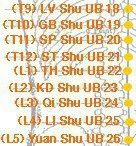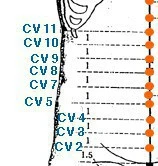Low Testosterone, Depression and the Aging Man - Acupuncture and Moxibustion Helpful (Study)
For men comes one of the more directly named syndromes in western medicine, PADAM (or partial androgen deficiency of the aging male). Also known as "male menopause", PADAM is an indicator for an important set of issues which may arise as men age.
Generally involving low testosterone (also mentioned as "Low T" in popular media), PADAM is actually broader than just testosterone and can have effects on an array of systems in the body. For men, most of the androgens in their body are produced by the testicles, primarily testosterone. These decline naturally as men age, some faster, some slower. The steroid hormones, "androgens", have effects on muscle growth, skin and hair growth, involved in fat metabolism and various brain functions. As men age and these androgens decline they can experience a range of symptoms including depression, fatigue, muscle weakness, insomnia, among many others.
Besides testosterone, other androgens are DHEA, DHEAS and DHT which are produced by the skin, liver, and adrenals. Androgen deficiency may occur in younger males as well but will come from testicular damage and/or genetic issues. Most of what I write about here would also apply to those cases, but this study and the information within is largely written for the "aging male".
I've written previously about the meaning of and treatment for "Low T" within Chinese Medicine. The study I'm going to write about today goes deeper into the internal hormonal changes which are initiated from both acupuncture and moxibustion (see "What is Moxibustion?") and serves to explain some of the beneficial effects of treatment.
In this study, researchers from Chongqing Medical University, utilized a PADAM induced rat model to explore the effects of both electroacupuncture (EA) and moxibustion ("moxa") at particular points. They induce androgen deficiency with cyclophosphamide injections given over week. Then they divided the 40 induced androgen deficiency rats into 4 groups of 10 - an untreated control, an EA group, a moxa group and a western medicine treatment, "androlin/testosterone", group.
From the Chinese Medicine side both the EA and the Moxa utilized the same points:
- UB 23
 The kidney back "shu" point - shu points are empirical points on the back of the body for certain organ systems in the body. UB 23 is often helpful for a very wide range of "kidney" imbalances - see "My Kidneys are What?" for more on those. This point is particularly useful for a wide range of hormonal/sexual/fertility related issues in both men and women.
The kidney back "shu" point - shu points are empirical points on the back of the body for certain organ systems in the body. UB 23 is often helpful for a very wide range of "kidney" imbalances - see "My Kidneys are What?" for more on those. This point is particularly useful for a wide range of hormonal/sexual/fertility related issues in both men and women.
- CV 4
 The small intestine front "mu" point - mu points are empirical points on the front of the body for certain organ systems in the body. CV 4 is also quite helpful for a very wide range of "kidney" imbalances, a variety of fertility/hormonal issues and deeper weaknesses in the body.
The small intestine front "mu" point - mu points are empirical points on the front of the body for certain organ systems in the body. CV 4 is also quite helpful for a very wide range of "kidney" imbalances, a variety of fertility/hormonal issues and deeper weaknesses in the body.
Researchers treated over 8 weeks and then analysis was performed on all of the rats in the study. They found that both the EA and the moxa groups had significantly increased serum levels of total testosterone and free testosterone with moxibustion showing the highest results. Similar results were shown for other important markers with moxibustion consistently showing better results than electroacupuncture.
Now in general, these are not surprising results to practitioners. Particularly that moxibustion brought about more strengthening changes is of little surprise. Moxibustion is most often used for tonification (i.e. strengthening) of deficiencies in the body. In fact, it needs to be used sparingly if at all on more excess conditions. For example, digestive problems from weakness, may improve with moxibustion at CV 12 and ST 36 for instance, but it could potentially worsen digestive problems from liver fire, for example. But even though we understand these mechanisms from a Chinese Medicine theory perspective, it does help to see it play out in direct research.
The researchers concluded that both electroacupuncture and moxibustion "appear to be effective treatments for PADAM".
This should be good news for men who are struggling with a wide range of moderate to severe issues that they often think are just "part of getting older". While we do age, and our strength and vitality will change - this can be slowed within reason. In fact, large parts of Chinese Medicine were largely established to enable sensible uses of medicine and lifestyle/diet change to foster less illness and longer life spans with stronger vitality. The value of the medicine was (and is) largely in preserving health and limiting illness, not in emergency care and symptomatic management. These issues should be taken seriously and treated as there is great possibilities for improvement within Chinese Medicine.
tag @yinyanghouse for questions/comments